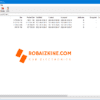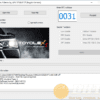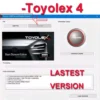K-line and Can-bus 7
Diagnostic scanner tools are essential tools used in the automotive industry to diagnose and repair various issues in vehicles. These tools use communication protocols such as K-Line and CAN-bus to connect to the electronic control modules within a vehicle and retrieve diagnostic information. he CAN bus and K-line protocols are vital components in the world of automotive diagnostics. They allow diagnostic tools to communicate with various car modules, providing essential information for diagnosing and troubleshooting issues. Both protocols play a crucial role in the diagnosis of various systems within a vehicle, including the engine control unit, transmission control unit, and airbag system. The CAN bus is a broadcast-based communication system that allows multiple devices to transmit and receive data simultaneously, while the K-line is a single-wire communication protocol that is used for more specialized diagnostic functions. By utilizing these protocols, mechanics and technicians can access real-time data from the vehicle, allowing them to make informed decisions and accurately diagnose problems. This results in faster and more efficient repairs, ultimately improving the overall performance and safety of the vehicle.
For vehicles equipped with the K-Line protocol, diagnostic scanner tools can be connected to the single-wire communication network to retrieve diagnostic information and diagnose faults. This information can be used to identify issues with the engine, transmission, suspension, and other critical systems, allowing mechanics to quickly diagnose and repair problems. For vehicles equipped with the CAN-bus protocol, diagnostic scanner tools can connect to the high-speed communication network to retrieve diagnostic information and diagnose faults. This information can be used to identify issues with the engine, transmission, suspension, and other critical systems, and also provides access to real-time data, allowing mechanics to make accurate and efficient diagnoses. In addition to retrieving diagnostic information, many diagnostic scanner tools also allow mechanics to perform various functions, such as clearing codes and reprogramming modules. These functions can help to resolve issues quickly and efficiently, improving the overall performance and reliability of a vehicle.
K-line
K-Line is a communication protocol that is commonly used in older vehicles to connect various electronic control modules within a vehicle. The K-Line is a single-wire communication network that enables these modules to communicate with each other and exchange data, allowing the vehicle’s systems to work together to control the engine, transmision, suspension, and other critical systems.
One of the key benefits of the K-Line is its simplicity. The K-Line uses a single wire to transmit data, reducing the amount of wiring needed within a vehicle and making it easier to diagnose faults and errors. The K-Line is also designed to be highly resistant to interference, ensuring that data transmitted over the network is accurate and reliable.
Another benefit of the K-Line is its compatibility with older vehicles. Many older vehicles were equipped with the K-Line, and it remains a popular choice for the repair and maintenance of these vehicles. The K-Line is also widely used in the aftermarket, making it easy to find compatible diagnostic tools and replacement parts.
In addition to its use in the automotive industry, the K-Line is also used in other industries, including aerospace, medical, and industrial automation. The K-Line is a simple and reliable communication technology that is designed to meet the demands of a wide range of applications.
The K-Line is a criticl technology for older vehicles. With its simplicity and compatibility with older vehicles, the K-Line plays a critical role in ensuring that older vehicles operate smoothly and safely. Whether you are a mechanic, engineer, or simply interested in automotive technology, understanding the K-Line is an important step in gaining a deeper understanding of older vehicles.
Can-Bus
The Controller Area Network (CAN) bus is a technology that is widely used in the automotive industry to connect various electronic control modules within a vehicle. The CAN bus is a communication network that enables these modules to communicate with each other in real-time, allowing the vehicle’s systems to work together to control the engine, transmission, suspension, and other critical systems.
One of the key benefits of the CAN bus is its ability to provide reliable and fast communication between modules. This helps to reduce the amount of wiring needed within a vehicle, as well as minimize the risk of faults and errors. The CAN bus is also designed to be highly resistant to interference, ensuring that data transmitted over the network is accurate and reliable.
The CAN bus uses a differential signaling method to transmit data, which helps to reduce the risk of data errors and improves the overall reliability of the network. The CAN bus also operates at high speeds, enabling modules to exchange information quickly and efficiently.
Another benefit of the CAN bus is its flexibility. The CAN bus is able to accommodate different types of data, including analog and digital data, and can be easily integrated with other communication networks, such as K-Line and LIN.
In addition to its use in the automotive industry, the CAN bus is also used in other industries, including aerospace, medical, and industrial automation. The CAN bus is a flexible and reliable communication technology that is designed to meet the demands of a wide range of applications.
CAN bus is critical technology for the modern vehicle. With its ability to provide fast and reliable communication between electronic control modules, the CAN bus plays a critical role in ensuring that vehicles operate smoothly and safely. Whether you are a mechanic, engineer, or simply interested in automotive technology, understanding the CAN bus is an important step in gaining a deeper understanding of the modern vehicle.
Conclusion
K-Line:
- Single-wire communication network
- Used in older vehicles for connecting electronic control modules
- Simple and reliable communication technology
- Known for its compatibility with older vehicles
CAN-bus:
- Differential signaling method for data transmission
- Used in modern vehicles for connecting electronic control modules
- High-speed and reliable communication network
- Provides fast and accurate communication between modules
- Can access real-time data to improve diagnostics and repairs.






what is UDS protocol in vag cars?
What is used in toyota camry 2005 year?
great post
Kain bas ek shaktishali aur tez system hai, lekin yahan Bharat mein karen abhi bhi kline ke saath malfunction ki gayi hain.
Great info, are there any can-bus sniffing tools you can advise to buy?
Gibt es ein Auto, das sowohl K-line als auch CAN verwendet? Mir ist es nicht ganz klar. Gibt es E-Books oder Online-Orte, um Fahrzeugdiagnose zu erlernen?
I have a 55 plate nisan almera and i need to know is my car canbus or kline as i want to buy diagnostic tool on your site?
Thanks Julian